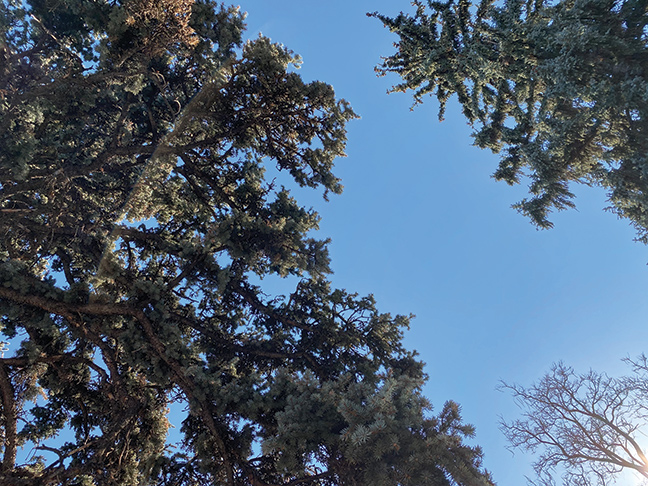BY BOB ANDERSON
It’s December, which means it has most likely been at least two months since you’ve thought about your trees. It is not uncommon to assume they’ll keep thriving during the winter months. But here in Colorado the snow is rather unpredictable. We had a big storm in October, but then saw temps rise to nearly 70 degrees in November. In fact October-February are the five driest months of the year. In short, Mother Nature does something every day to kill Denver trees, and so do people. Check this list of items to avoid if you want healthy thriving trees:
• Buy a tree just because ‘it looks nice at the nursery’ and figure out later where to plant it
• Leave wire basket, burlap and strings on the root ball after planting
• Never remove the excess soil at the top of the root ball down to where the roots begin
• Plant it too deep because the excess soil was not removed
• Plant where there is no irrigation system
• Never water it
• Water it too much
• Never winter-water October-February, the five driest months of the year
• Damage or completely griddle the trunk with lawn mowers and string trimmers
• Fail to maintain a wide, 3 to 4 inch deep ring of mulch (wood chips) around it
• Pile mulch deeper than 4 inches and resting against the trunk
• Place landscape fabric under mulch
• Fail to prune 5 times in the first 25 years to train a dominant central trunk to the top of the tree
• Allow branches grow vertically
• Never prune
• Never hire an International Society of Arboriculture Certified Arborist or Master Arborist
• Hire an unlicensed, uninsured “tree service” who is selling door-to-door
• Let someone who has no idea about tree structure, growth and anatomy prune
• Never inspect it for insects or disease
• Never treat to prevent harmful insects and diseases or after they have been diagnosed
• Use fertilizer spikes or fertilize during the Summer months
• Top or dramatically make the tree smaller
• Thin by removing a large quantity of the small, leaf-bearing branches
• Believe that most tree care advice on the internet is correct, even from experts and universities
Our landscape trees are on 100% life support from the day they are planted, and that life support comes from humans. Historically, Denver was a place where the environment did not support the needs of trees except a few Cottonwoods, here and there, along creeks. The list of reasons why is long and growing, just a few examples are compacted clay soil, 13 inches of annual precipitation (in a good year), low humidity with 300 days of bright sunlight annually. In addition, during the growing season there are high winds, snow, freezing and severe temperature swings. Most landscape trees are forest trees from other climates and even our “native” trees are from places where the conditions are more conducive. Knowing this, there are some things you can do to help your trees: understand that most nursery trees are too deep in the root ball and have poor branching so pick the ones that do not or fix it at the time of planting; prune to overcome the normal, erratic growth; water 12 months of the year; and get multiple quotes from Arborists so you know you are hiring the best. Remember that your trees are a lot like your new neighbors: they are not from around here and need a lot of help becoming a Wash Park local.
Author Description:
Bob Anderson is an ISA Board Certified Master Arborist with DLC Arbor Service in Denver. He has been keeping Colorado trees alive for 30 years.

